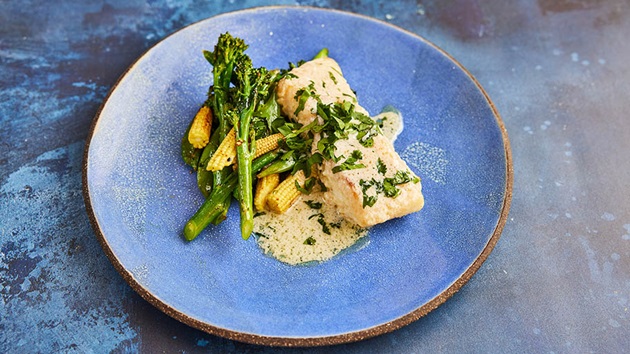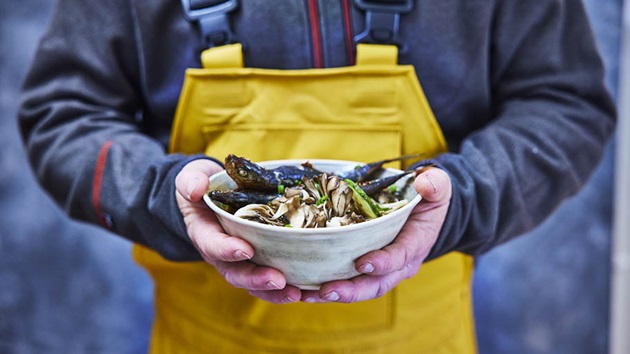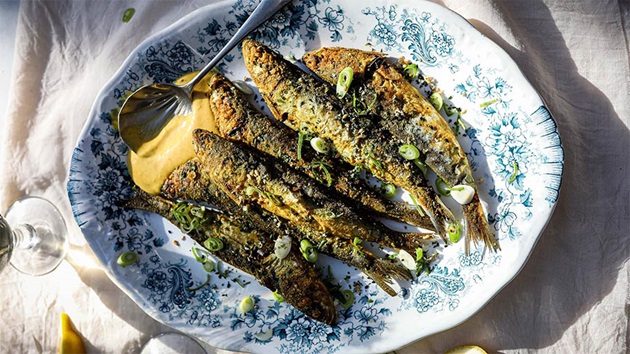By Nick Wyke
Hake, South Africa
Profile: Closely related to cod, haddock and hoki, hake is a mild tasting fish with a delicate texture. Hugely popular in Spain and one of South Africa’s favourite fish, this deep-water species has delicious flaky white meat with few bones and is both an affordable and sustainable choice. Chefs like it as a less expensive alternative to cod, which marries well with punchy flavours such as bacon, capers, saffron, olives and cayenne pepper.
“Hake is such a versatile, sustainable and quick to cook ingredient,” says chef Naledi Toona. “It’s an affordable substitute to pricier non-certified fish in many dishes such as salads, curries, burgers, wraps. Lightly pan-fried hake is the perfect, easy dinner. Served with seasonal vegetables and a creamy coconut sauce to enhance the natural flavours of the fish.”
Good swap for: cod, haddock, pollock
Capelin, Japan
Profile: Sourced from Iceland, home to the world's first MSC certified capelin fishery, capelin is very popular in Japan but remains underappreciated in other parts of Asia. A sleek coldwater foraging fish with an olive-green back and silvery white belly, capelin is usually grilled and eaten with lemon juice and mayo, deep fried or even added to paella. It can be eaten from nose to tail so you don’t waste anything.
Capelin roe is a vital ingredient for producing masago, used in sushi in Europe and Japan. These delicate orange eggs, served on the top of rice in nigiri, are loaded with protein and nutrients such as omega-3s, selenium, and vitamin B12.
Good swap for: Japanese smelt (shishamo) which used to be very popular and abundant, but due to low stock status is not accessible anymore. As capelin looks and tastes like Japanese smelt, it is sold as sakhalin shishamo.
Hot somen noodles with grilled capelin
Sea Mullet, Western Australia
Profile: Juicy fleshed sea mullet is an oily fish with a strong flavour. Considered by many people to be only a bait fish, it is very affordable compared to other fresh fish species. This meaty ray-finned fish is particularly delicious hot smoked or cooked on the barbecue and can even be roasted whole in the oven. It pairs well with staple Italian ingredients such as tomatoes, olives and basil. The roe of mullet is considered a delicacy.
Kenny McHardy, chef at Manuka Woodfire Kitchen in Fremantle, Australia always has mullet on the menu. It’s caught fresh every week by Damien Bell of Bellbuoy Seafoods.
“I've always cured and smoked mullet, which is incredible, or roasted it whole in the wood oven with tomato and fennel. There is a lot of fat between the guts and the rib cage that renders in the pan to help flavour the sauce.”
Good swap for: Mackerel
Suggested recipe: “Because of the high amount of oil and the bold flavour of mullet, it tends to work well in risotto or pasta, even with a potato salad,” says McHardy. “Another easy way to cook mullet is to fillet and skin the fish then crumb and fry. Serve with tartare sauce and a simple fennel salad.”
Pacific Jack mackerel, Chile
Profile: Widespread in the Pacific and typically smaller than common mackerel species, Jack mackerel is big in Japan where it’s known as ‘aji’ and enjoyed as nigiri and sashimi, cut-open and sun-dried, grilled or deep-fried.
MSC certified Jack mackerel is increasingly finding its way into the European market where fisheries are dealing with sustainable stock management issues. It’s a new addition to the Fish Tales range of tinned seafood run by chef and cookbook author Bart van Olphen. “Jack mackerel has this unique full flavour and beautiful texture. It’s an oily fish packed with healthy omega-3s,” says Bart. “It is nutritious and super tasty, and very easy to cook with. You can simply pan fry a fillet, eat it raw like sashimi, or smoke it. And, of course, you can eat it out of a can.”
Good swap for: sardines, Atlantic mackerel (which lost its MSC certification in 2019 due to disputes over fishing quotas, leading to overfishing), or salmon for its omega-3s.
Suggested recipe: Smoked mackerel sandwich with Chilean guacamole
Sardines, Mexico
Profile: Sardines have a strong flavour and are oily and soft in texture. They’re often viewed as a low-end product, but they’re high in fatty acids and provide a versatile protein for many.
Long since trumped by tuna in terms of popularity, people can be put off by the whole head-to-tail fish form and the strong smell – to them sardines are more ‘military ration’ than ‘culinary fashion’.
Chefs have ways to soften bold flavours, with briny sauces, citrus and crushed herbs. Simplicity is the key to a satisfying sardine fix, says sustainably minded Mexican chef Lula Martin del Campo: “I love sardines because they are so tasty, easy to prepare and healthy. I always have them in my pantry and when I want a flavourful snack, I make them with pico de gallo (a classic Mexican salsa made from diced tomato, onion, chilli, lime and coriander) lots of lemon and salt on a baked corn tostada, it is second to none! Sometimes I add cooked beans.”
Good swap for: tuna



